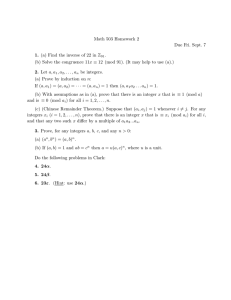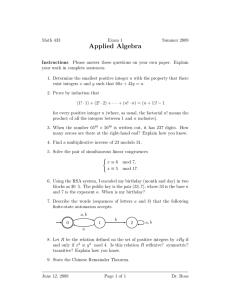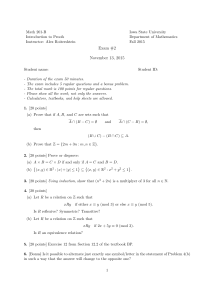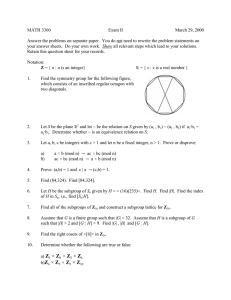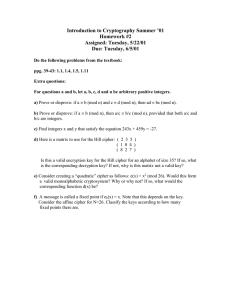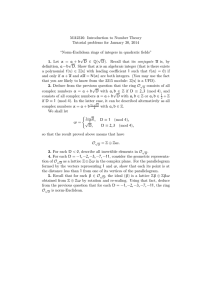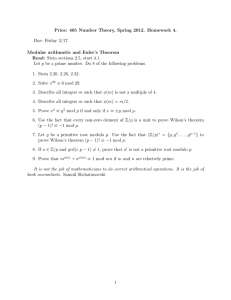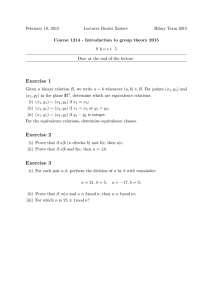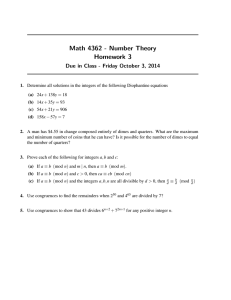MATH 3360 Exam I July 25, 1994
advertisement
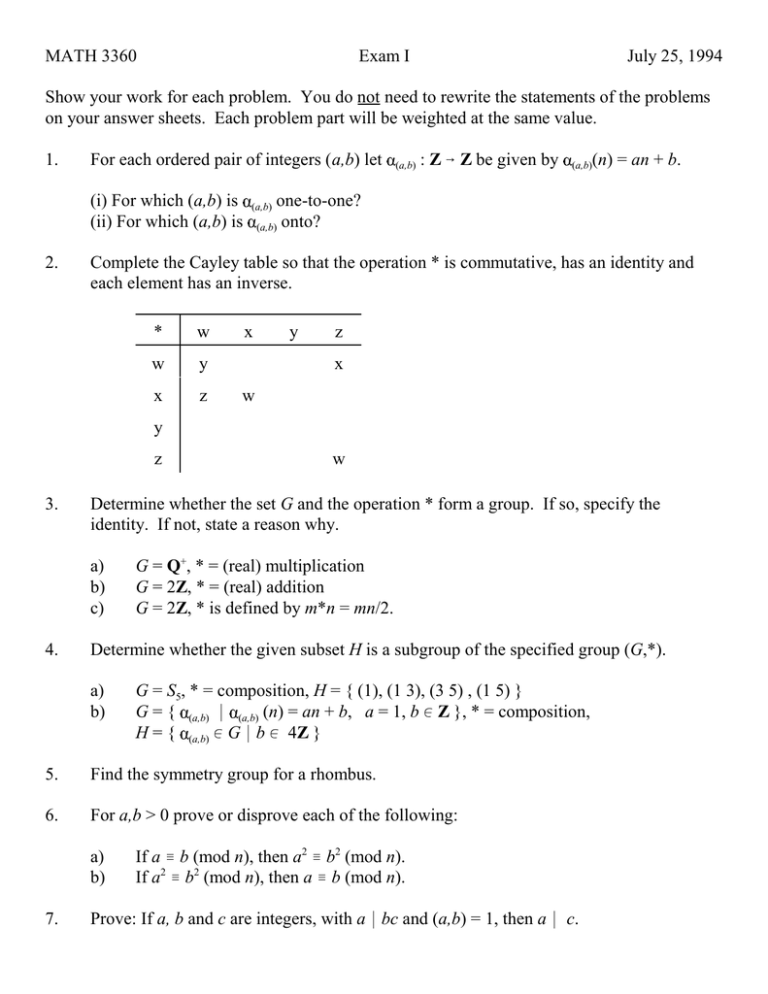
MATH 3360
Exam I
July 25, 1994
Show your work for each problem. You do not need to rewrite the statements of the problems
on your answer sheets. Each problem part will be weighted at the same value.
1.
For each ordered pair of integers (a,b) let
(i) For which (a,b) is
(ii) For which (a,b) is
2.
(a,b)
: Z 6 Z be given by
(n) = an + b.
(a,b)
one-to-one?
(a,b) onto?
(a,b)
Complete the Cayley table so that the operation * is commutative, has an identity and
each element has an inverse.
*
w
w
y
x
z
x
y
z
x
w
y
z
3.
Determine whether the set G and the operation * form a group. If so, specify the
identity. If not, state a reason why.
a)
b)
c)
4.
w
G = Q+, * = (real) multiplication
G = 2Z, * = (real) addition
G = 2Z, * is defined by m*n = mn/2.
Determine whether the given subset H is a subgroup of the specified group (G,*).
a)
b)
G = S5, * = composition, H = { (1), (1 3), (3 5) , (1 5) }
G = { (a,b) * (a,b) (n) = an + b, a = 1, b 0 Z }, * = composition,
H = { (a,b) 0 G * b 0 4Z }
5.
Find the symmetry group for a rhombus.
6.
For a,b > 0 prove or disprove each of the following:
a)
b)
7.
If a / b (mod n), then a2 / b2 (mod n).
If a2 / b2 (mod n), then a / b (mod n).
Prove: If a, b and c are integers, with a * bc and (a,b) = 1, then a * c.
